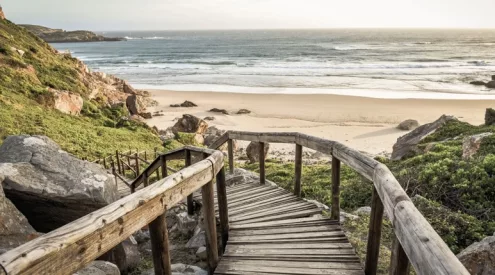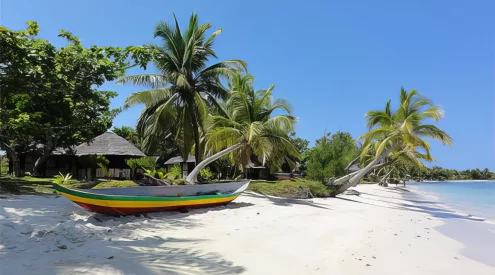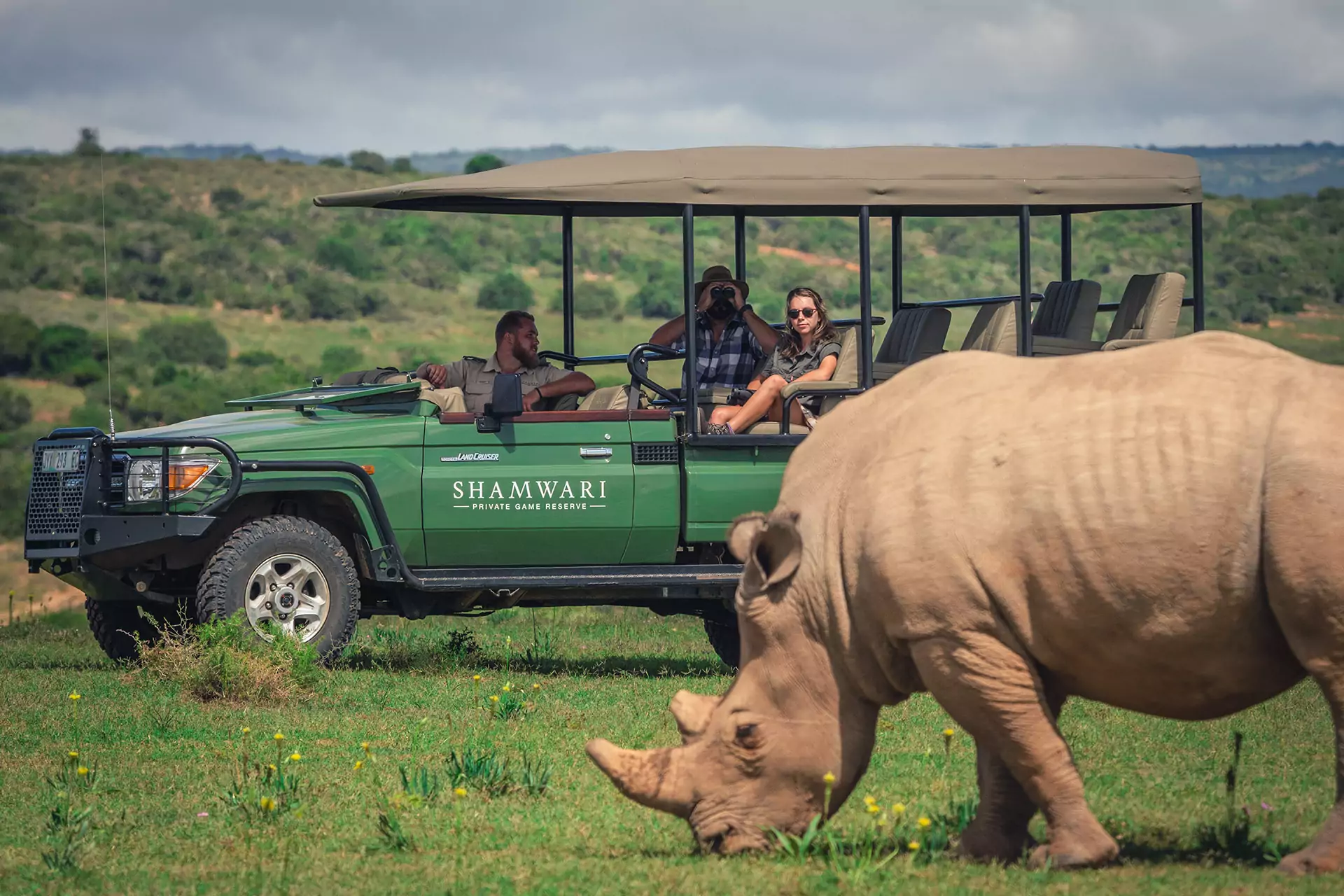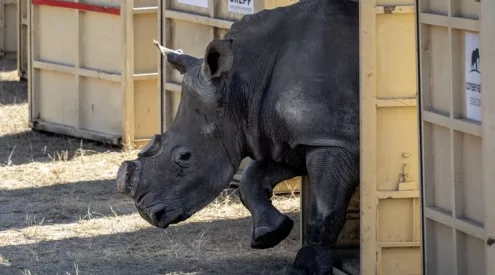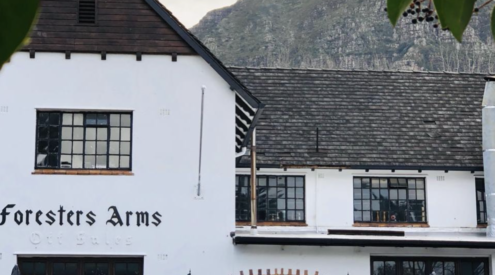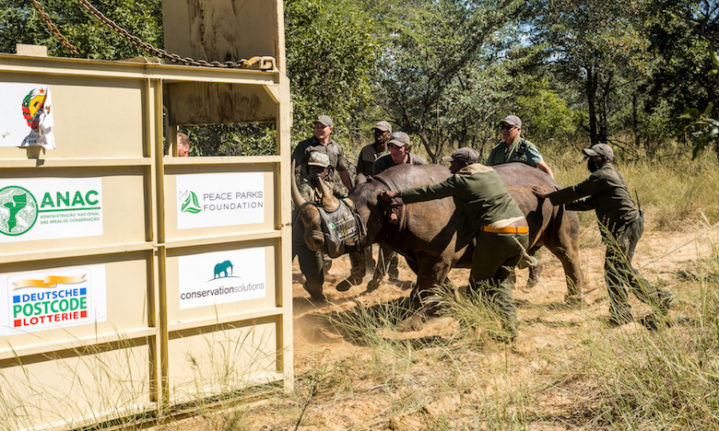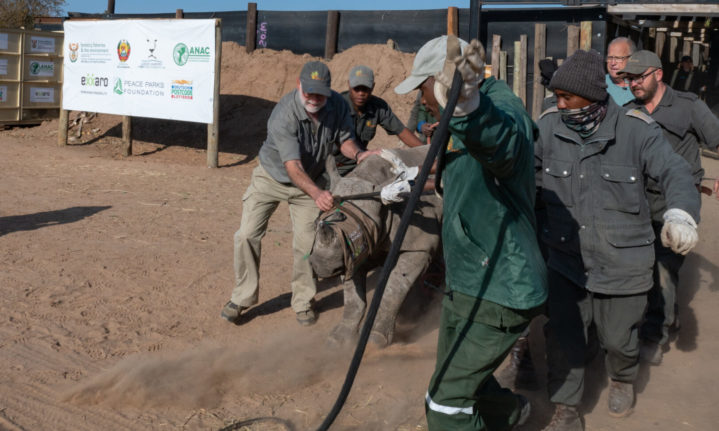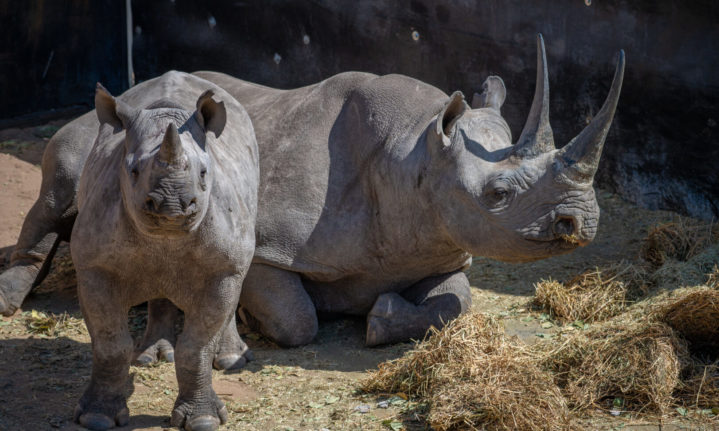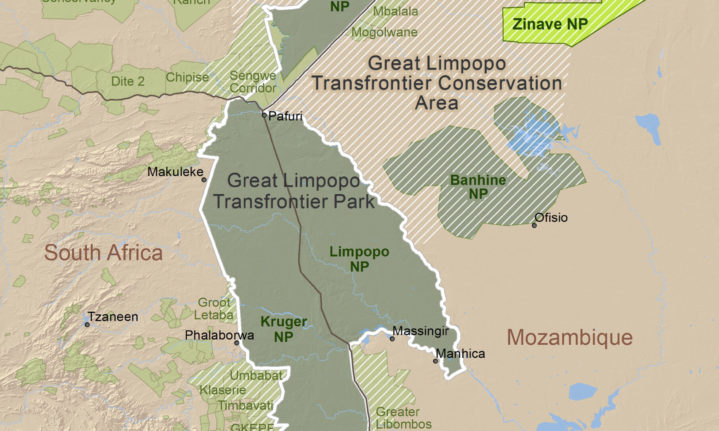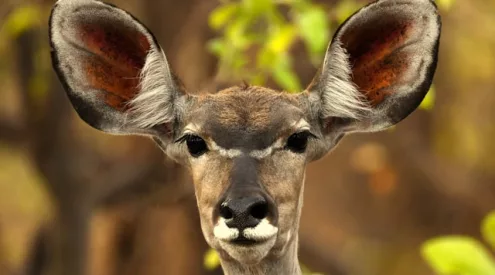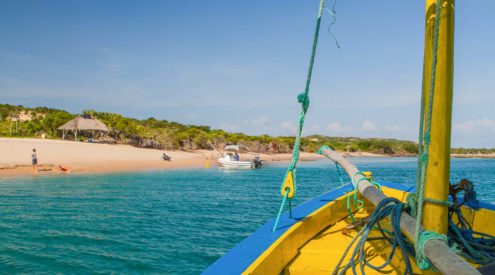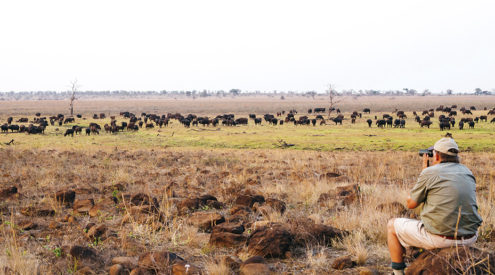Seven critically endangered black rhinos have been safely translocated from Manketti Game Reserve in South Africa to Zinave National Park in Mozambique. This follows the successful reintroduction of 19 white rhinos to the park just two months earlier.
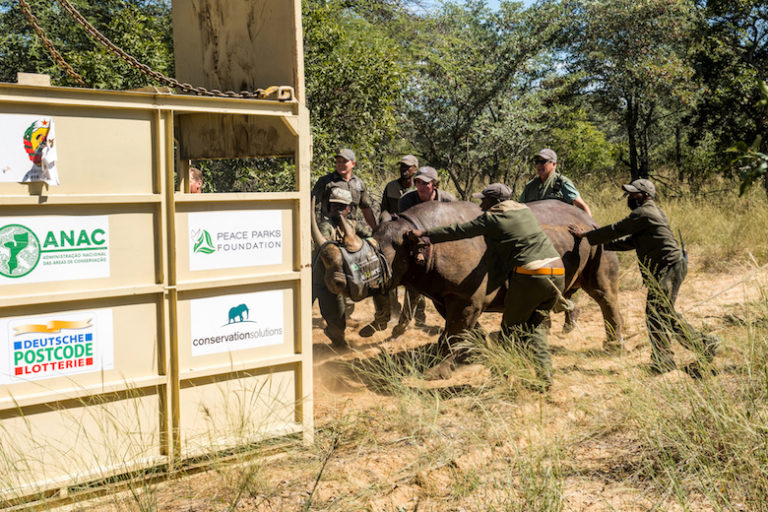
The white rhinos have adjusted to their new home with ease and, remarkably, a new calf was born into the herd soon after their arrival. The same is hoped for the newly arrived black rhino brought there as part of a pioneering conservation project committed to restoring, securing, and expanding populations of both species.
This is part of a two- to three-year timeline, the project is already well on its way to relocating more than 40 rhinos to Mozambique in a series of highly co-ordinated and carefully managed rewilding operations.
Under extreme threat
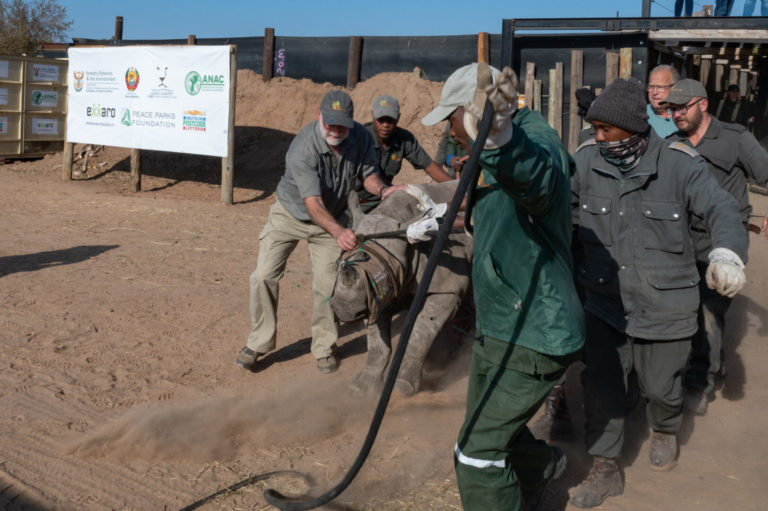
Beyond its extinction in Mozambique, the black rhino suffered a radical decline across its entire native range: between 1960 and the present day, their numbers have dropped dramaticially from Kenya down to South Africa, by 98% to less than 6,000 individuals. The mammoth task of increasing numbers and rebuilding thriving populations was overwhelming at its worst – but this has served as a powerful motivation to persist in innovative conservation efforts, with active range expansion being one such approach.
To protect rhino for future generations, their reintroduction to new suitable habitats, with capacity to rebuild large viable breeding herds under strong security and strategic conservation management, is one of the many measures currently undertaken by Peace Parks – and Zinave makes a strong case as safe haven for new founder herds. It offers the expansive but secure range the species needs to thrive, with broadly rich rewards for its own ecosystems in doing so.
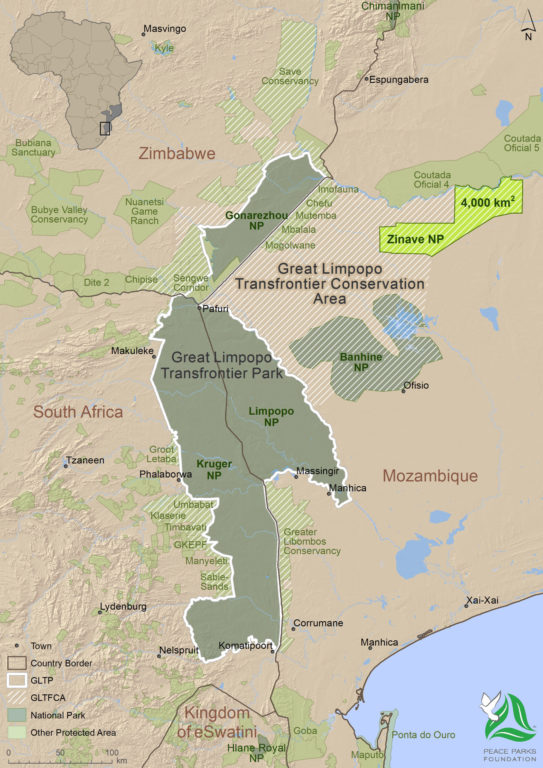
African rhinos are ‘keystone species’ – their presence and role within an ecosystem has a disproportionate effect on the life of all kinds, from insects to antelope and elephant. These biological impacts differ crucially between the two species, combining restorative benefits which cannot be reproduced.
Nature’s building blocks: Meet the keystone species of southern Africa
Whilst white rhinos are helping to restore Zinave’s grasslands as they graze, black rhinos browse on very specific plants and process them uniquely, acting as a potent natural fertiliser and allowing the nutrients from vegetation to be cycled back into the earth with great efficiency.
The arrival of a founder herd of black rhino in Zinave marks an incredibly special achievement for Peace Parks and our partners. To have two African rhino species reinstated as the vital cornerstones of this complex ecosystem will make a crucial contribution both to the greater biodiversity and to the status of the park as a sought-after eco-tourism destination and the only “Big Five” national park in Mozambique.’ Said Werner Myburgh, Peace Parks CEO.
Keeping them safe
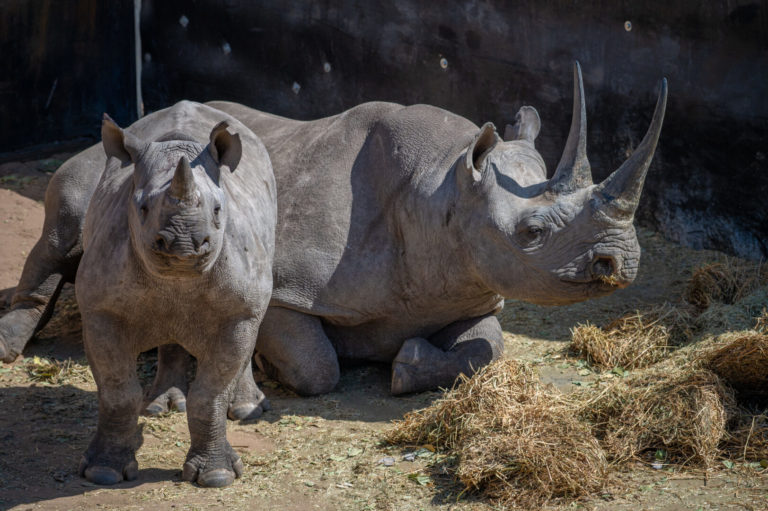
Translocating black rhino can pose greater challenges than with their square-jawed relatives given their less tolerant, more aggressive nature, and keeping this precious cargo safe once they arrive in Zinave requires the same level of critical care. T
To ensure that they were in peak condition before embarking on their epic journey – the longest road transfer of black rhino ever done – they were monitored in specially constructed bomas for several weeks. Once on the trucks, they were supervised by a team of veterinarians throughout, whilst armed forces never left the convoy’s side.
Again, they now find themselves in reinforced boma structures in Zinave, where they will be observed until such time as the veterinary teams sign off on their release into the park’s rhino sanctuary. To maximise the safety of the rhinos, they have each been fitted with a state-of-the-art tracking sensor, enabling the live tracking of animals and assets in a central operations control room that is operational 24/7.
The sensors form part of a suite of integrated security interventions aimed at keeping the rhino, and the park’s other wildlife, safe. Significant investment, also with additional funding support from the German Postcode Lottery and MAVA Foundation, has been channelled into further protection efforts that include the recruitment of 34 additional rangers who received specialist training on rhino protection, bringing the number of rangers deployed in the sanctuary and surrounding areas to 80.
In addition, 20 sanctuary guards will be deployed for first-line detection of incursions. A helicopter and fixed-wing aircraft – integrated into a rapid response unit with a canine team – were introduced to boost surveillance and counter-poaching reaction capabilities.
‘We are proud to see Zinave National Park emerge as a flagship protected area in Mozambique through our partnership with Peace Parks Foundation. The arrival of the iconic black rhino back into the park for the first time in four decades marks yet another step towards realising the greater potential of the park and the opportunities it holds for growth in regional tourism, community upliftment and employment. If this is what can be achieved in one park in just seven years, we are excited about what the future holds for more transformative conservation achievements not only in Zinave, but also the other protected areas,’ said Celmira da Silva, the Director General of Mozambique’s National Administration for Conservation Area.
Pictures: Peace Parks Foundation
ALSO READ: Making trees count: Its not just about numbers

